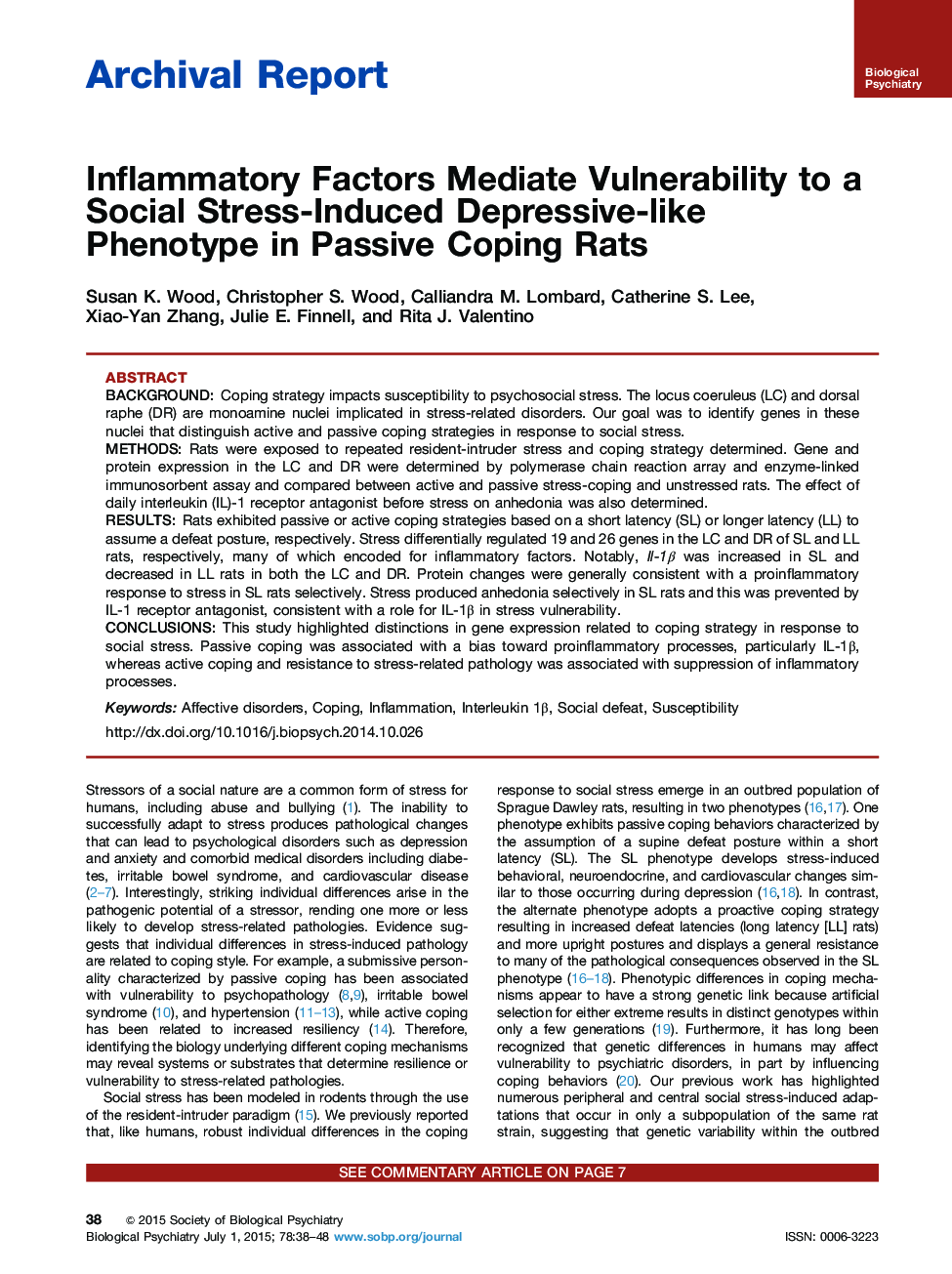| Article ID | Journal | Published Year | Pages | File Type |
|---|---|---|---|---|
| 6226810 | Biological Psychiatry | 2015 | 11 Pages |
BackgroundCoping strategy impacts susceptibility to psychosocial stress. The locus coeruleus (LC) and dorsal raphe (DR) are monoamine nuclei implicated in stress-related disorders. Our goal was to identify genes in these nuclei that distinguish active and passive coping strategies in response to social stress.MethodsRats were exposed to repeated resident-intruder stress and coping strategy determined. Gene and protein expression in the LC and DR were determined by polymerase chain reaction array and enzyme-linked immunosorbent assay and compared between active and passive stress-coping and unstressed rats. The effect of daily interleukin (IL)-1 receptor antagonist before stress on anhedonia was also determined.ResultsRats exhibited passive or active coping strategies based on a short latency (SL) or longer latency (LL) to assume a defeat posture, respectively. Stress differentially regulated 19 and 26 genes in the LC and DR of SL and LL rats, respectively, many of which encoded for inflammatory factors. Notably, Il-1β was increased in SL and decreased in LL rats in both the LC and DR. Protein changes were generally consistent with a proinflammatory response to stress in SL rats selectively. Stress produced anhedonia selectively in SL rats and this was prevented by IL-1 receptor antagonist, consistent with a role for IL-1β in stress vulnerability.ConclusionsThis study highlighted distinctions in gene expression related to coping strategy in response to social stress. Passive coping was associated with a bias toward proinflammatory processes, particularly IL-1β, whereas active coping and resistance to stress-related pathology was associated with suppression of inflammatory processes.
